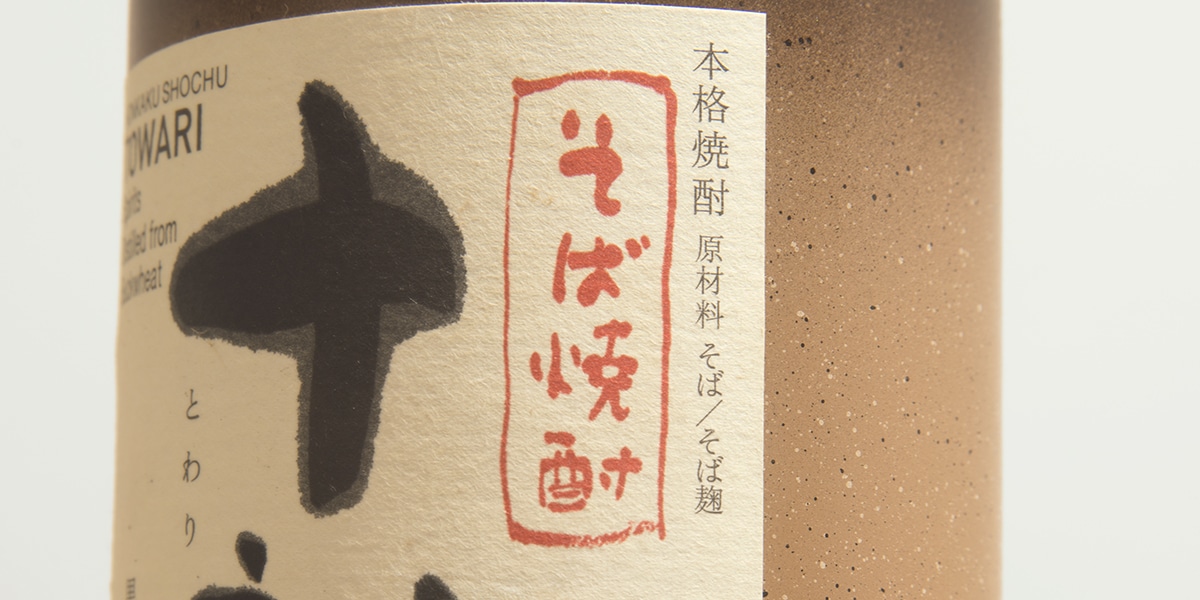Soba shochu (soba-jochu, そば焼酎) is made of buckwheat and has nutty aromas and flavors. It’s a relatively new category of honkaku shochu. Miyazaki and Nagano prefectures are known for their buckwheat crop and soba shochu.

What Does Soba Shochu Taste Like?
The nutty, grainy aroma taste of buckwheat is the primary tasting note. In general, soba shochu has a mellow aroma, a mild sweetness, and a smooth finish. Vacuum-distilled brands tend to be lighter and fruitier, while atmospherically-distilled brands have more intensity and depth.
Other common notes include sesame, peanut butter, cereal grains, and peach. Herbal/vegetal elements like grass and celery are also common–especially when rice or barley koji are used.
Miyazaki and Nagano Buckwheat
In the Takachiho area of Miyazaki, buckwheat is a local specialty. Soba shochu was developed in 1973 as an additional means of utilizing the local crop.
Nagano prefecture is another place known for soba. Nagano soba-jochu was developed in 1975.
Fermenting and Distilling Soba Shochu
Buckwheat is first husked and broken into smaller pieces. Next, it’s steamed and then added to the moromi (mash).
Black and white koji are both utilized. And rice koji and barley koji are common ingredients in the grain bill. The koji creates acidity that protects the moromi from spoilage. Both rice and barley koji add fruity, herbal, and grainy elements to the flavor profile.
Buckwheat is very hard, making it difficult for koji to develop. But Takara Shuzo pioneered the methods required to make soba koji. Shochu with only soba koji and soba has a rich flavor.
Shochu typically has a two-stage moromi. When rice and barley koji are used, the first moromi will utilize them. The soba is added for the second moromi. For 100% soba shochu, soba is used during both stages.
Once the mash is completely fermented, it’s distilled, collecting the alcohol vapors and flavor components. Vacuum distillation is the most common style, but atmospheric distillation is sometimes used, as well. Vacuum-distilled soba shochu is lighter and smoother. Atmospheric distillation produces a heavier, more flavorful spirit. Some brands are blends of atmospheric and vacuum distillation.
Soba Shochu Pairings
Similar to other types of honkaku, soba shochu pairs well with a variety of food. Pork-based dishes are at the top of the list. Examples include pork tonkatsu, chashu, shogayaki, and kakuni.
Unsurprisingly, soba noodles are another good pairing base. Look out for zaru, tensoba, and nanban. And there’s another reason to pair soba noodles and shochu. Sobayu (soba-yu) is the water the noodles are cooked in. It’s delicious and nutritious. When mixed with soba shochu, it’s called sobayu-wari. Try the two in a 1:1 ratio.
Other good pairings include fried oysters, chicken karaage, sesame chicken, and agedashi tofu.
Famous Soba Shochu Brands
Only a few brands of soba shochu are available in the US. Miyazaki-made Unkai and Towari are the two most popular brands. Tamadama is another to look out for.
Tenzan and Touge “Ridge” from Nagano are also brands worth trying.